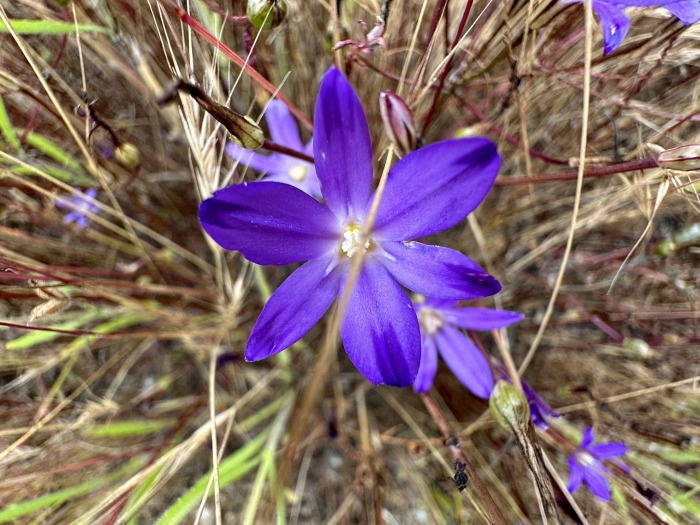Threadleaf Brodiaea
(Brodiaea filifolia)
Threadleaf Brodiaea (Brodiaea filifolia)
/
/

Eric Alan Isaacson
CC BY 4.0
Image By:
Eric Alan Isaacson
Recorded By:
Copyright:
CC BY 4.0
Copyright Notice:
Photo by: Eric Alan Isaacson | License Type: CC BY 4.0 | License URL: http://creativecommons.org/licenses/by/4.0/ | Rights Holder: Eric Alan Isaacson | Publisher: iNaturalist | Date Created: 2023-05-27T17:09:59Z |

















Estimated Native Range
Summary
Brodiaea filifolia, commonly known as threadleaf brodiaea, is a perennial herb endemic to the coastal sage scrub and chaparral regions of southern California, specifically within Orange, Riverside, and San Diego Counties. It is often found in vernal pools and grasslands, which are critical for its lifecycle. The plant typically produces bright purple flowers on inflorescences that reach 8-12 inches in height during the late spring to early summer months. The flowers are showy and attract a variety of pollinators. Threadleaf brodiaea is a federally threatened species, primarily due to habitat loss and degradation.
In cultivation, threadleaf brodiaea is valued for its striking purple flowers and its ability to thrive in heavy clay soils, which can be challenging for many other plants. It is sometimes used in native plant gardens and restoration projects where its specific soil and moisture requirements can be met. The plant prefers full sun to light shade and requires a dry summer period, mimicking its native habitat’s conditions. While it is not commonly found in the horticultural trade due to its rarity, it can serve as an important educational tool for conservation and native plant appreciation. Threadleaf brodiaea reproduces both vegetatively and through cross-pollination with unrelated individuals, which is essential for maintaining genetic diversity within populations.CC BY-SA 4.0
In cultivation, threadleaf brodiaea is valued for its striking purple flowers and its ability to thrive in heavy clay soils, which can be challenging for many other plants. It is sometimes used in native plant gardens and restoration projects where its specific soil and moisture requirements can be met. The plant prefers full sun to light shade and requires a dry summer period, mimicking its native habitat’s conditions. While it is not commonly found in the horticultural trade due to its rarity, it can serve as an important educational tool for conservation and native plant appreciation. Threadleaf brodiaea reproduces both vegetatively and through cross-pollination with unrelated individuals, which is essential for maintaining genetic diversity within populations.CC BY-SA 4.0
Plant Description
- Plant Type: Herb, Bulb
- Height: 0.5-1 feet
- Width: 0.5-0.5 feet
- Growth Rate: Moderate
- Flower Color: Purple
- Flowering Season: Spring, Summer
- Leaf Retention: Deciduous
Growth Requirements
- Sun: Full Sun, Part Shade
- Water: Medium
- Drainage: Medium
Common Uses
Bee Garden, Border Plant, Butterfly Garden, Drought Tolerant, Low Maintenance, Rock Garden
Natural Habitat
Coastal sage scrub and chaparral regions of southern California
Other Names
Common Names: Threadleaf Brodiaea, Wild Hyacinth, Narrowleaf Brodiaea
Scientific Names: , Brodiaea filifolia, Hookera filifolia, Hookeria filifolia,
GBIF Accepted Name: